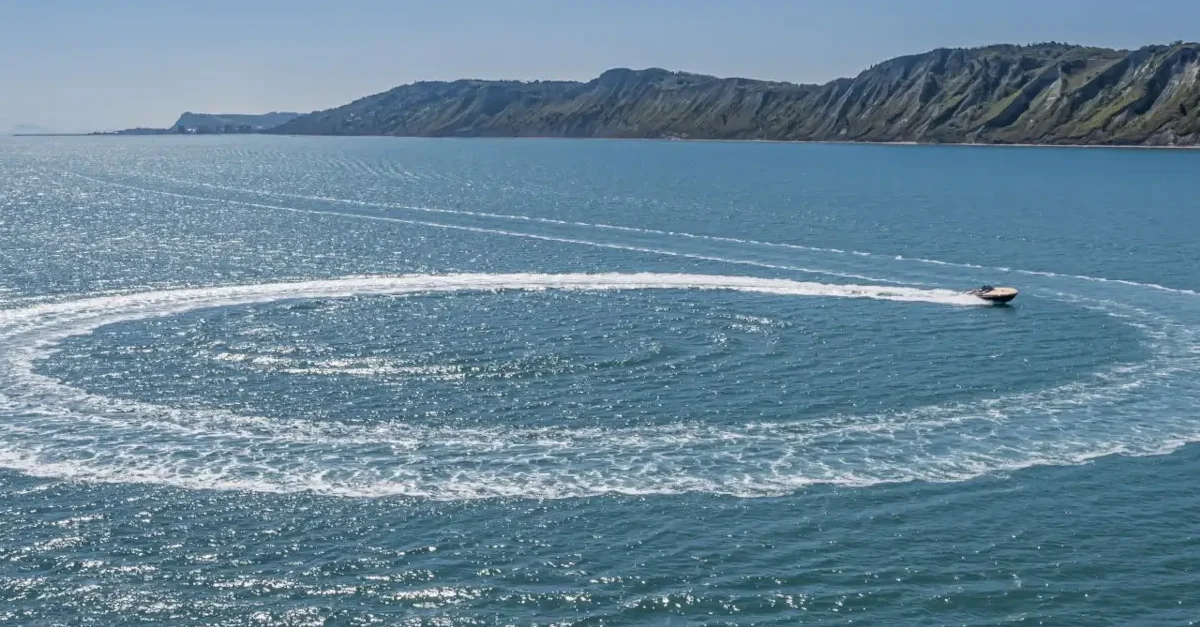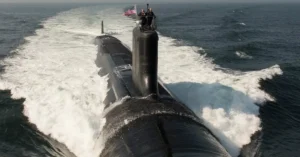When discussing “what are boats made of” it’s important to understand that boats, as diverse watercraft vessels, can be constructed using various materials and techniques. The materials and design choices depend on the type and purpose of the boat in question.
Throughout history, boat building has evolved significantly, with builders utilizing wood, fiberglass, aluminum, steel, and composites. Each material has unique advantages depending on the vessel’s desired performance and aesthetic qualities.
In our exploration of boat construction, we’ll delve into the various materials and processes used by builders, how they impact a boat’s design, and the considerations that play a role in choosing the ideal material for a specific watercraft.
Materials Used in Boatbuilding
So you’re curious about what boats are made of? Boatbuilding materials have come a long way from just wood and traditional materials. In this section, you will learn about the different materials used in boat construction, including wood, advanced composites, plastics, and metals.
Wood and Traditional Materials
Wood has been used in boatbuilding for centuries due to its availability and workability. It’s lightweight, easy to shape, and aesthetically pleasing. However, wooden boats require regular maintenance, such as sanding, painting, and varnishing, to prevent rot and deterioration.
Aside from wood, other natural materials were also used in traditional boatbuilding, such as natural fibers for sails and ropes, animal skins for waterproofing, and pitch for sealing seams.
Advanced Composites and Plastics
Over the years, technological advancements have introduced a wide range of synthetic materials to boatbuilding, like fiberglass, carbon fiber, and Kevlar.
- Fiberglass: Fiberglass is commonly used in boat construction due to its strength, durability, and low maintenance requirements. Fiberglass combines fine glass fibers and resin, which hardens into a strong, lightweight, and watertight material.
- Carbon Fiber: Carbon fiber is a high-performance composite material that is stronger and lighter than fiberglass. Its strength-to-weight ratio makes it an excellent choice for high-performance boats, but can be more expensive.
- Kevlar: Kevlar is another composite material known for its incredible strength and resistance to impact. It’s often used in the construction of racing boats and bulletproof vests. However, it’s more expensive compared to fiberglass.
- PVC: PVC (polyvinyl chloride) is a versatile plastic for constructing inflatable boats. PVC is lightweight, puncture-resistant, waterproof, and affordable compared to other materials.
Metals in Modern Boat Construction
Metals have become increasingly popular in modern boatbuilding due to their strength, durability, and resistance to corrosion.
- Steel is a strong and rugged material used in larger vessels, such as cargo ships and military vessels. However, its weight can make it less suitable for smaller boats.
- Aluminum: Aluminum is a lightweight, corrosion-resistant, and easily repairable metal used in boat construction. It’s famous for small boats and fishing vessels, as it balances strength, weight, and maintenance requirements well.
In conclusion, the choice of material for a boat depends on factors like performance, durability, weight, and cost. From traditional wood to advanced composites and metals, boatbuilding materials continue to evolve to meet the diverse needs of boaters.
Boat Design and Structure

What are boats made of, and how do their design and structure contribute to their performance? In this section, we will explore the essential elements of boat design and construction, delving into the engineering behind the hull, deck, and innovations in the industry.
Understanding Boat Hulls
Boat hulls are the most critical aspect of a vessel’s structure, as they are responsible for stability and performance in various conditions. The hull’s shape and material are significant factors that influence these aspects. Common materials used to craft hulls include aluminum, steel, fiberglass, and wood.
There are several hull designs, each with specific characteristics and advantages:
- Displacement hulls generate lift by displacing water and are suitable for long-distance cruising due to their fuel efficiency.
- Planing hulls have a flatter design that allows them to rise above the water at high speeds, leading to increased performance.
- Semi-displacement hulls combine the features of the previous two hull types, offering versatility for various boating activities.
Deck and Superstructure
The deck and superstructure of a boat serve to support and complement the hull. The deck refers to the flat surface on top of the hull, which provides stability and a place for passengers and gear. On the other hand, the superstructure comprises all above-deck components, such as cabins, bridges, and masts.
Construction materials for decks and superstructures generally mirror those of the hulls, with aluminum, steel, fiberglass, and wood widely used across the boating industry. Fiberglass molding is a prevalent technique for creating these structures, resulting in vital, lightweight components.
Innovations in Boat Design
Technological advancements have significantly impacted boat design and construction in recent years. For instance, vacuum infusion techniques are now used to create even lighter, stronger fiberglass hulls and structures. Additionally, advanced computer modeling has enabled engineers to design more efficient and versatile hull shapes that withstand various water conditions better.
In the realm of materials, there is a growing interest in composite materials as alternatives to traditional materials. Composites offer advantages such as increased strength, weight reduction, and corrosion resistance, enabling boats to have enhanced performance and longevity.
We hope this brief overview of boat design and structure gives you a better understanding of what goes into crafting these remarkable vessels.
Construction and Assembly

The process of constructing boats has come a long way from when they were exclusively built by hand. Knowing what boats are made of and how they are assembled can help potential buyers and boat enthusiasts better understand how these magnificent vessels come to be.
Handcrafting and Boatbuilding Techniques
Traditionally, boats were crafted using wood, with skilled boatbuilders employing various techniques to assemble their vessels. Some of these methods included:
- Carvel planking involves attaching tightly fitted wooden planks to a frame. This made the hull smooth and watertight.
- Clinker (lapstrake) planking: In this method, wooden planks were overlapped and then fastened together. This made the hull more rigid and resistant to deflection.
- Strip planking: A more modern technique involves gluing thin strips of wood edge-to-edge, then applying a fiberglass or composite material for added strength and waterproofing.
Engineered Production and Technology
Technological advancements have transitioned Modern boatbuilding from handcrafting to engineered production processes. Computer-aided design (CAD) and finite element analysis (FEA) have become integral components in designing and building boats.
- CAD: Computer-aided design software allows engineers to create detailed, three-dimensional boat hulls and component models. This ensures each part is designed accurately and efficiently.
- FEA: Finite Element Analysis is a modeling technique to analyze how boat components respond to various stressors, such as pressure and impact. This analysis helps engineers optimize designs for strength and weight optimization.
Boat materials have also evolved beyond just wood. Today, a diverse range of materials are used for building boats. Some popular materials include:
- Fiberglass: A composite material made of glass fibers and resins, providing strength, durability, and resistance to rot and corrosion.
- Aluminum: A lightweight and strong metal that has become popular for smaller boats like fishing vessels and pontoon boats.
- Steel: Used in more extensive commercial boats, steel offers increased strength and stability, albeit at a higher weight when compared to lighter materials.
In conclusion, boat construction has come far from its early wooden roots. Modern technology, engineering, and materials have ushered in a new era of innovative and efficient boatbuilding techniques.
Boating Varieties and Uses

As we explore what boats are made of, we must recognize that the material used often depends on the boat’s intended purpose. This section will discuss various boating options and their primary uses, focusing on recreational and sporting ships and commercial and fishing vessels.
Recreational and Sporting Boats
Recreational boats come in various styles and designs, from luxury yachts to versatile pontoon boats. For instance, sailboats are famous for their eco-friendly, wind-powered operation and can be made of fiberglass or aluminum. Depending on the model, they’re great for leisurely cruising and competitive racing.
Yachts are typically larger luxury boats, often motorized and made from fiberglass or steel, providing comfort and premium amenities for extended journeys on the water. An increasingly popular choice is pontoon boats, which feature a stable and spacious platform on top of buoyant tubes, making them perfect for family outings and parties. They are often built with aluminum or fiberglass materials.
- Sailboats: Fiberglass or Aluminum
- Yachts: Fiberglass or Steel
- Pontoon Boats: Aluminum or Fiberglass
Commercial and Fishing Vessels
In contrast to recreational boats, commercial and fishing vessels prioritize function over appearance. Fishing boats usually have a more rugged construction, often with aluminum or fiberglass hulls and specialized fishing equipment on board. Additionally, they require materials that can withstand long hours at sea in various weather conditions.
Barges are another essential type of commercial watercraft for transporting domestic and international heavy cargo. These vessels are often steel-made to provide robust and durable support for their enormous weight.
Ultimately, the material selected for a boat’s construction relies heavily on the boat’s intended use, whether for leisurely recreational outings or efficient commercial transport.
- Fishing Boats: Aluminum or Fiberglass
- Barges: Steel
Maintenance and Care

As boating enthusiasts who’ve wondered, “What are boats made of?” we know that understanding the materials used in boat construction is essential. In this section, we’ll discuss some valuable tips for maintaining and caring for the different materials, ensuring longevity and durability regardless of whether your boat is made of fiberglass, aluminum, steel, or wood.
Fiberglass boats are known for their durability, but they need regular care to prevent damage from factors such as UV rays and water. Keeping a fiberglass boat clean is essential. Wash it regularly with a soft sponge and mild detergent.
Another critical step is to wax and polish the gel coat periodically, as it helps protect against UV damage and maintains the boat’s appearance. Lastly, inspecting the hull for any signs of cracking allows us to address potential issues early.
Aluminum boats are a popular choice because they’re lightweight and resistant to cracking. However, they can suffer from corrosion if not cleaned and maintained correctly. We recommend using a specialized cleaning solution suitable for aluminum surfaces to care for an aluminum boat. Also, consider applying a protective coating, such as paint or clear coat, to help reduce the risk of corrosion.
Steelboats are valued for their strength and longevity. Despite this, rust can become an issue if not addressed. To maintain steel boats, we should consistently clean and inspect them for areas where rust might form. If rust spots are discovered, removing the rust, cleaning the place thoroughly, and applying a layer of anti-rust paint to protect the surface is essential.
Lastly, wooden boats have been around for centuries, and their maintenance includes cleaning, treating, and sealing the wood. Regularly inspect seams for signs of separation or decay and address any detected wooden part that may rot. Wood treatments like varnish or paint can help prevent water damage in the long run.
In summary, proper maintenance and care are crucial for preserving the life of your boat, no matter what material it’s made from. Cleaning, inspecting, and treating your boat’s surfaces can significantly impact its overall longevity and performance on the water.
Our Most Important Key Facts for 2024

Durable Materials: Boats in 2024 predominantly use advanced composites and alloys.
Lightweight Innovation: Emphasis on lightweight structures enhances speed and fuel efficiency.
Eco-Friendly Designs: Sustainable materials and green technologies contribute to environmentally conscious boat construction.
High-Tech Integration: Cutting-edge electronics and intelligent materials redefine the boating experience in 2024.
FAQ – What are Boats Made of

Have you ever wondered what boats are made of? Our detailed FAQ section will address common questions about boat materials and their history and give you answers to all of Your Questions.
What material is a boat made of?
Boats comprise four primary materials: fiberglass, wood, aluminum, and steel. Most personal vessels are made from fiberglass and aluminum, offering an outstanding balance between strength, durability, and weight. Fiberglass, in particular, is a popular choice due to its relatively low cost and easy maintenance.
Larger vessels, such as ships and mega-yachts, are often constructed with steel for additional strength and stability. Steel and aluminum are combined to create hybrid structures.
Wood is a traditional material used for boat building, especially in old and vintage boats. Even though wooden ships require more maintenance, they offer a classic appeal and a connection to the rich history of boat construction.
What were boats made of?
In the past, the primary material used for constructing boats was wood. Wood was abundant, easily accessible, and easy to work with, making it the go-to choice for boat builders. Different types of wood, such as cedar, teak, and oak, were used for various parts of the boat structure, providing a unique aesthetic to each vessel.
Over time, as technology advanced, other materials became more prominent in boat construction. For instance, the use of steel and iron in the 19th century revolutionized the shipbuilding industry and created more massive and sturdy ships.
With modern materials like fiberglass and aluminum in the 20th century, boat building became even more diverse and innovative, leading to the wide range of boat materials we see today.
These materials became popular due to their lightweight nature, corrosion resistance, and ease of fabrication, making them ideal for various boat types and sizes.
What materials are ships made of?
As avid mariners, we often get asked, “What are boats made of?” To quench this curiosity, let us dive into the materials used to construct boats and ships.
Aluminum: Lightweight and durable, aluminum is widely used in small boats and big ships. It is trendy for its corrosion resistance and low maintenance. Aluminum boats offer increased fuel efficiency and are well-suited for freshwater and coastal sailing. Most modern ships are made of aluminum, steel, or both.
Steel: Known for its strength, steel is used primarily in constructing large ships, including barges and mega yachts. Steel boats have high weight carrying capacities and can withstand harsh ocean conditions, making them suitable for ocean crossings and heavy-duty sailing.
However, they require regular maintenance to prevent corrosion.
Wood: Boats made of wood have been around for centuries; they evoke a sense of nostalgia and are especially popular with vintage boat enthusiasts. Wood’s natural buoyancy and aesthetic appeal make it a common choice for traditional and modern boat building. However, wooden boats can demand high maintenance, such as treating rot, and provide less durability than other materials.
Fiberglass: Fiberglass is a prevalent choice for recreational boats due to its lightweight, durability, and ease of maintenance. Fiberglass boats are often reinforced with a composite of fibers and resin, giving them a strong and sturdy structure.
Understanding these materials can help you make informed choices when purchasing or maintaining a boat. We hope You enjoyed our Article about “What are boats made of?” and we are curious about Your Thoughts in our comment section below – Happy sailing!











